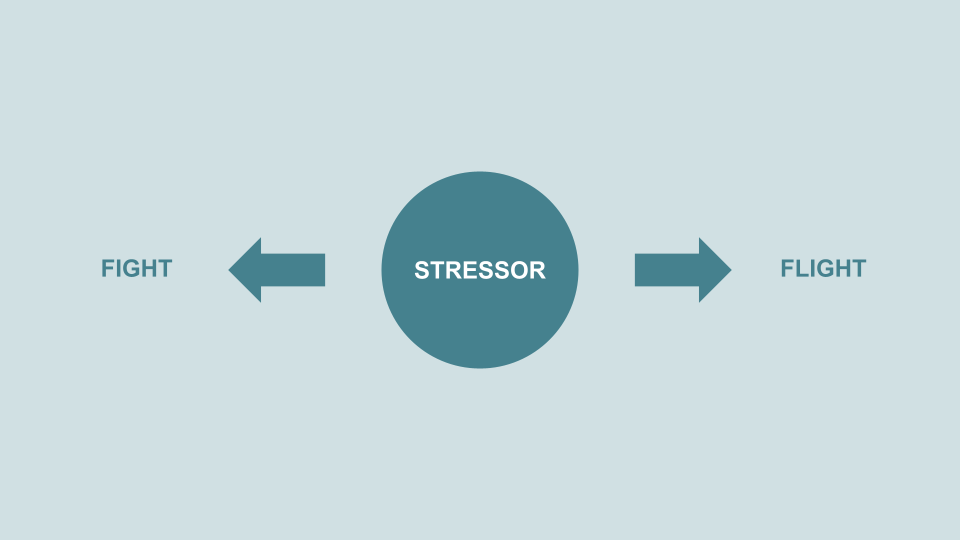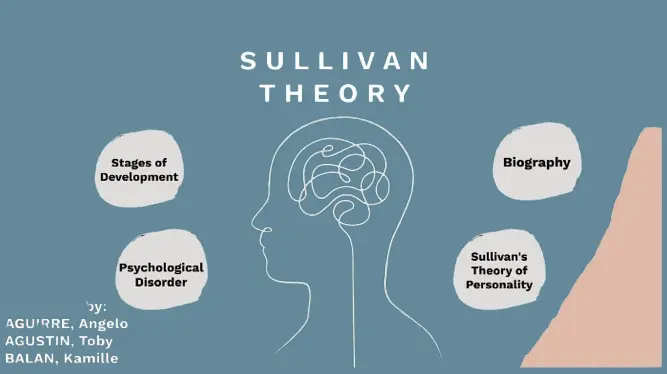Introduction: When Stress Becomes Survival
Have you ever noticed your heart racing before a big presentation, your palms sweating before an argument, or a knot forming in your stomach during moments of uncertainty? Those sensations aren’t random — they’re part of your body’s ancient survival mechanism called the fight or flight response.

The fight or flight response is your body’s built-in alarm system — a rapid reaction that prepares you to either face danger or escape it. Thousands of years ago, this instinct protected humans from predators. Today, while the threats have changed — from wild animals to work stress — the biological reaction remains the same.
This response helps us stay alert and focused when needed, but when it doesn’t shut off properly, it can keep the body in a constant state of tension. Over time, this can lead to anxiety, fatigue, and even chronic health issues.
In this article, we’ll explore how the fight or flight response works, how to recognize when you’re stuck in it, and most importantly, how to calm your body and return to balance.
What Is Meant by the Fight and Flight Response?
The fight or flight response is the body’s automatic reaction to perceived threats. When your brain senses danger — whether physical or emotional — it signals the autonomic nervous system (ANS) to spring into action.
This system has two main branches:
- The sympathetic nervous system (SNS) — responsible for activating the fight or flight response.
- The parasympathetic nervous system (PNS) — responsible for calming the body, known as the “rest and digest” mode.
When the SNS is triggered, your body releases stress hormones like adrenaline and cortisol. These chemicals increase your heart rate, heighten alertness, and redirect blood flow to muscles so you can fight back or run away.
Common physical responses include:
- Faster breathing and heartbeat
- Dilated pupils for sharper vision
- Tense muscles ready for movement
- Sweating to cool the body
- Slower digestion (since the body prioritizes survival)
This quick, coordinated response was essential when humans faced life-threatening danger. But in modern life, our stressors are rarely physical — yet our body still reacts as if they are.
The Extended Responses: Freeze and Fawn
While “fight or flight” are the classic reactions, psychologists have identified two additional responses:
- Freeze – The body becomes immobile, like a deer caught in headlights, waiting for the danger to pass.
- Fawn – A person tries to appease others to avoid conflict or harm, often seen in trauma survivors.
These reactions all stem from the same survival circuitry — your body trying to keep you safe in the face of perceived threat.
How to Tell If Your Body Is in Fight or Flight Mode
Sometimes, we’re so used to being stressed that we don’t realize our body is still in survival mode. The fight or flight response can stay partially active for days or even weeks, especially if we’re under chronic stress.
Here are common signs that your body may be stuck in fight or flight:
Physical Signs
- Rapid heartbeat or pounding chest
- Muscle tension, clenched jaw, or headaches
- Digestive issues (bloating, nausea, or stomach pain)
- Shallow or fast breathing
- Sweating or feeling overheated
- Difficulty sleeping or constant fatigue
Emotional Signs
- Feeling on edge or easily irritated
- Overreacting to small triggers
- Difficulty concentrating or racing thoughts
- Constant worry or anticipation of danger
- Emotional numbness after intense stress
Behavioral Signs
- Avoiding stressful situations or people
- Overworking or staying busy to avoid emotions
- Sudden bursts of anger or crying
- Turning to food, alcohol, or screens for relief
Your body’s signals are messages — not malfunctions. They’re trying to tell you that something feels unsafe or overwhelming. Recognizing these patterns is the first step in learning how to restore calm.
What Happens When Your Body Is Stuck in the Fight-or-Flight Response?
A short burst of fight or flight energy is helpful. But when your body remains in that state for too long, it starts to take a toll.
1. Physical Exhaustion
When stress hormones like cortisol and adrenaline stay elevated, your system runs on overdrive. Over time, this leads to fatigue, hormonal imbalances, and weakened immunity. Chronic tension can also contribute to high blood pressure, heart disease, and digestive disorders.
2. Mental and Emotional Strain
Constant alertness keeps the brain trapped in survival thinking. This can cause:
- Anxiety and panic attacks
- Irritability and anger outbursts
- Difficulty focusing or making decisions
- Emotional burnout
3. Disconnection from the Body
When stress becomes chronic, you may start to numb out — disconnecting from sensations and emotions as a defense mechanism. While it may feel protective, this disconnection can lead to long-term emotional imbalance and difficulty experiencing joy or calm.
4. Sleep and Recovery Disruption
When the nervous system never fully relaxes, sleep becomes shallow and unrestorative. The body doesn’t get the deep rest it needs to repair itself, leaving you tired even after hours of sleep.
Being stuck in fight or flight isn’t a sign of weakness. It’s your nervous system doing its best to protect you — but it needs help to reset and rest.
How Do I Get My Body Out of Fight or Flight Mode?
The good news is that you can teach your body to return to safety. By intentionally engaging the parasympathetic nervous system, you can calm your body’s alarm and shift into relaxation mode.
1. Deep Breathing
Slow, mindful breathing is one of the fastest ways to activate the parasympathetic response. Try this:
- Inhale through your nose for 4 seconds.
- Hold for 2 seconds.
- Exhale slowly through your mouth for 6 seconds.
Repeat several times. Within minutes, your heart rate and tension begin to lower.
2. Grounding Techniques
Grounding brings your attention back to the present, reminding your body that you’re safe.
Try the 5-4-3-2-1 method:
- 5 things you can see
- 4 things you can touch
- 3 things you can hear
- 2 things you can smell
- 1 thing you can taste
This sensory check-in gently pulls you out of mental overdrive.
3. Physical Movement
Exercise releases endorphins and helps clear stress hormones. You don’t have to push hard — gentle movement like walking, stretching, or yoga can reset your body’s rhythm.
4. Mindfulness and Meditation
Practicing mindfulness trains your brain to observe stress without reacting to it. Meditation, even for five minutes, can quiet the mind and relax the body.
5. Reconnecting with Safety
Spend time in calm environments — nature, soft lighting, quiet music, or comforting spaces. Safety cues tell your nervous system that danger has passed.
6. Therapy and Nervous System Regulation
If you find it difficult to regulate stress alone, therapy can be transformative.
- Cognitive Behavioral Therapy (CBT) helps change stress-related thought patterns.
- Somatic Therapy focuses on how the body holds stress and teaches release techniques.
- Eye Movement Desensitization and Reprocessing (EMDR) helps resolve trauma that keeps the body stuck in survival mode.
Healing is gradual — it’s about teaching your body that it can trust calm again.
The Science Behind the Stress Cycle
To understand how to calm the fight or flight response, it helps to know how your body balances stress.
The Sympathetic vs. Parasympathetic Systems
The sympathetic nervous system triggers stress responses. The parasympathetic nervous system counteracts it, helping your body rest, digest, and recover.
When both systems are balanced, your body can handle challenges without burning out. But chronic stress keeps the sympathetic system dominant, preventing the parasympathetic system from doing its job.
Breaking the Stress Loop
Completing the stress cycle means allowing your body to discharge the energy created during stress — through physical movement, emotional release, or relaxation. When the body feels safe again, the cycle ends, and recovery begins.
Emotional Awareness and the Modern World
Our ancestors’ fight or flight system evolved to protect them from physical danger. But today, our threats are more psychological — deadlines, social pressure, financial uncertainty, digital overload.
Even a critical email or social rejection can activate the same stress response as being chased by a predator. Over time, this constant low-grade activation leads to burnout and emotional fatigue.
Recognizing that your body isn’t “overreacting” is key. It’s simply using an old system to handle modern problems. Once you understand this, you can respond with kindness instead of frustration.
Healing from Chronic Fight or Flight: Restoring Balance
Healing your nervous system means learning how to live in calm, not chase it occasionally. It’s a lifelong process of self-awareness and gentle adjustment.
Here are steps toward long-term recovery:
- Prioritize Rest: Quality sleep is the foundation for nervous system healing.
- Nourish Your Body: Balanced meals stabilize blood sugar and hormone levels.
- Set Boundaries: Reduce exposure to toxic environments or emotional triggers.
- Practice Self-Compassion: Speak to yourself as you would to someone you love.
- Build Safe Connections: Relationships built on trust and empathy calm the nervous system.
- Embrace Slow Living: Schedule time for quiet, hobbies, or solitude.
Every small action that communicates safety to your body helps shift it out of survival mode.
When to Seek Professional Help
If your stress feels unmanageable — leading to panic attacks, chronic fatigue, or emotional numbness — seeking professional support can help.
A mental health therapist, psychologist, or trauma specialist can guide you through nervous system regulation and teach personalized coping techniques. Remember, asking for help isn’t a weakness — it’s a powerful act of self-care.
Conclusion: From Survival to Calm
The fight or flight response is a beautiful reminder that your body is always trying to protect you. It’s not the enemy — it’s a signal that your system is craving safety and rest.
Learning to regulate this response doesn’t mean eliminating stress; it means developing the inner tools to meet it with steadiness. With awareness, compassion, and practice, you can teach your body that it’s safe again — and rediscover the calm that was always meant to be your natural state.



